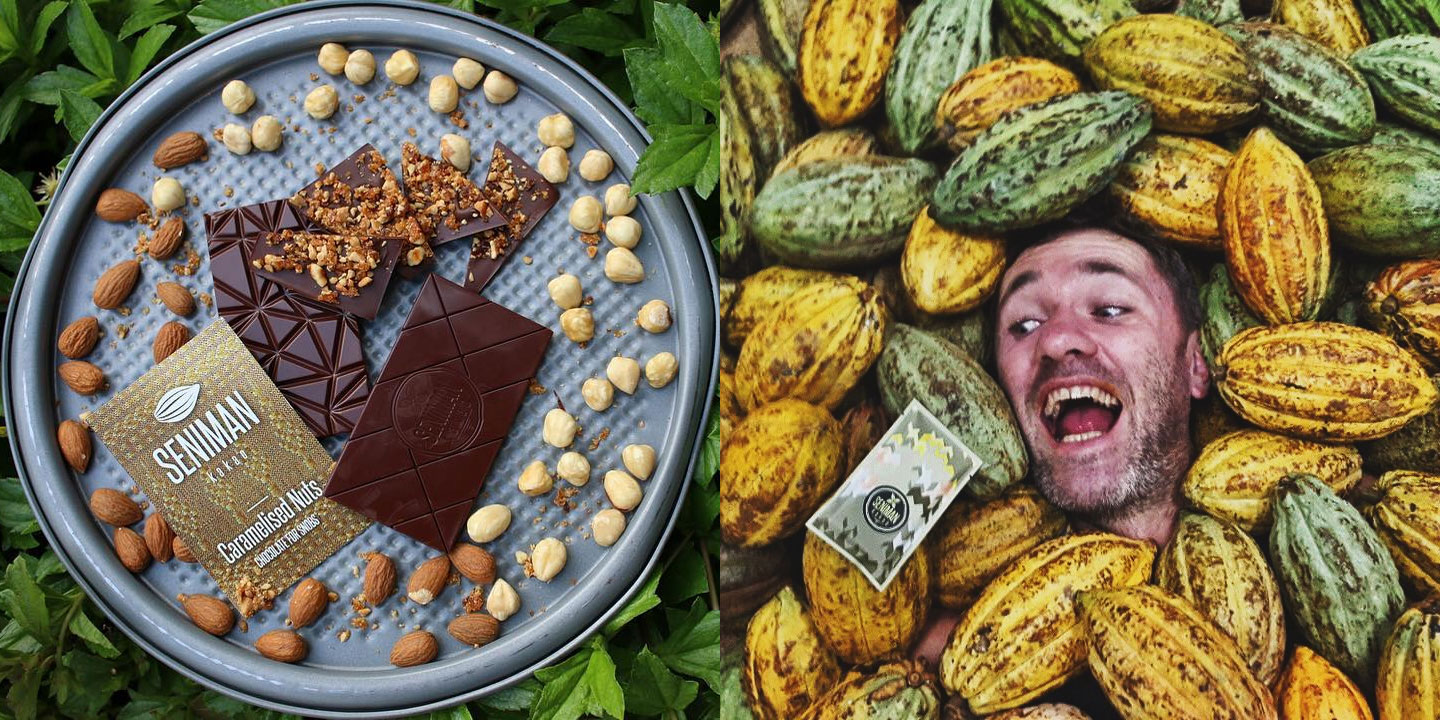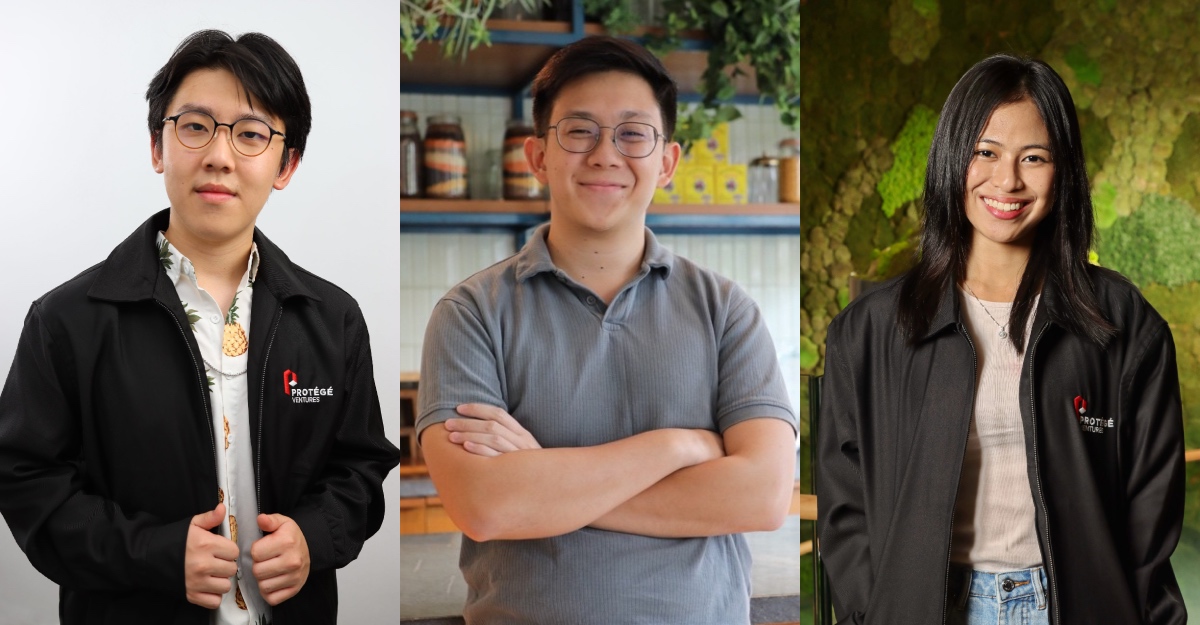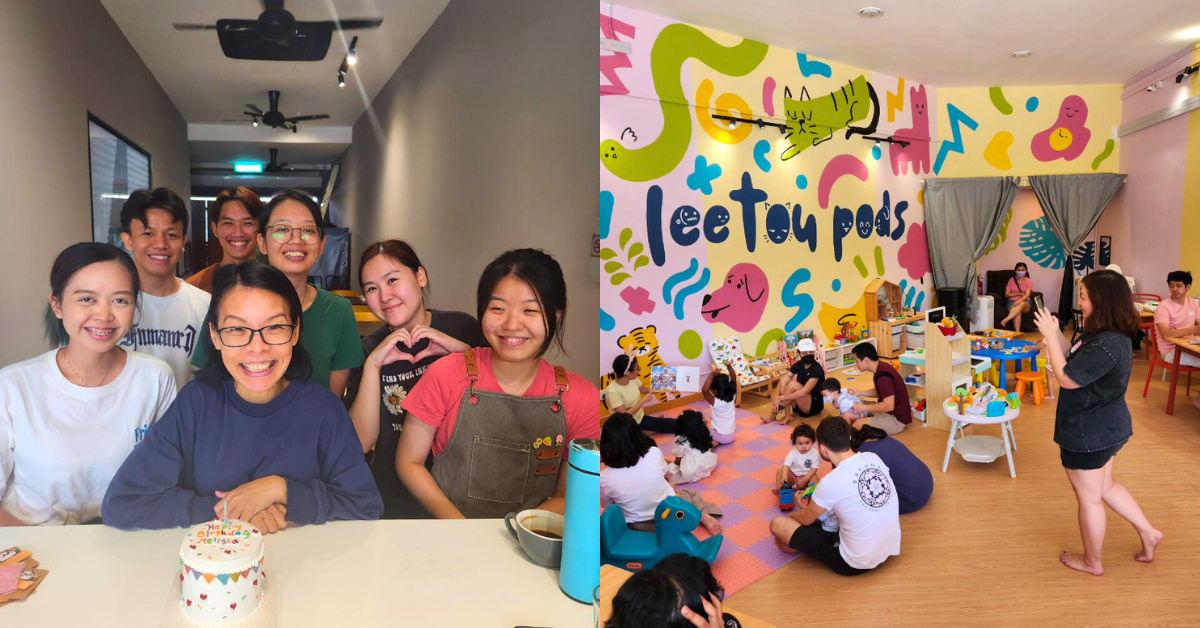- Seniman Kakao is a Malaysian producer of specialty chocolate products, with their products made mostly from Malaysian cacao beans.
- The business was created by Artisan Coffee founder Michael Wilson and his wife Amirah Mohamad in 2016.
For all the talk of countries like Belgium and Switzerland producing the world’s best chocolates, it’s a bit unfortunate that we often tend to forget that great chocolates can also come from anywhere and everywhere else, including from our own backyard.
This is where Michael Wilson—the founder of Artisan Roast coffee and Seniman Kakao—hopes to change public perception.
Alongside his wife Amirah Mohamad, and his core team of Susan, Norma, Nona, and Fareez, Michael now operates Seniman Kakao in addition to running Artisan Roast, and produces specialty chocolate bars, drinking chocolate, and cocoa nibs right here in Kuala Lumpur.
“When setting up Artisan Roast, TTDI with Amirah in 2012, we wanted to start doing chocolate, but the cafe got very busy and we didn’t have time to figure out the chocolate side of things,” he said. “I used to travel a lot looking for green coffee beans and would see cacao pods and wonder what we could do with them if we applied our coffee roasting expertise.”
“So while the company was founded in 2016, we’ve been playing with cacao for four years now,” Michael explained. “We have always loved chocolate, especially craft chocolate, and I loved the idea of making chocolate in a cacao-growing country.”
“I met several Malaysian cacao farmers who were mostly growing it out of nostalgia and I was taken in by their passion.”
Keeping It Simple
Talking about Seniman Kakao’s chocolate, Michael reveals that for the most part, their chocolates are made from locally-sourced cacao beans due to the ease of access to local farmers and producers.
“It was always our intent to use Malaysian cacao, but we have experimented with cacao from Equador, Vietnam, Trinidad, and Papua New Guinea,” he said. “There were great flavours from each area, but we also had to throw away a lot of defects—up to 50% of beans in some cases.”
“We did have the same issue with Malaysian cacao, but the greatest advantage was that we could meet with the producers and understand their issues while helping them understand what we’re after in terms of quality of bean,” he continued. “Most cacao is grown to produce maximum yield from a given farming area, but we’re after quality and lack of defects, and we can only get this from people who understand what we’re after.”

And in order to make the product as genuine as possible, Michael explains that his team only use two ingredients—chocolate and as little sugar as they can—to create great taste and preserve the inherent medicinal benefits of the cacao bean.

“If you look at the ingredients from most supermarket chocolates, you’ll see that there are a lot of other ingredients with long names that go into their bars,” he explained. “Cacao has the potential to provide many health benefits including combating Parkinson’s disease and sleep disorders and improving cell health, but much of that goodness is lost through poor roasting and substitute ingredients.”
“Most cacao is roasted quite dark to mask the off-flavours inherent in defect beans,” he added. “However, cacao is a fruit, and some of that fruitiness should come through into the chocolate.”
Learning The Artform
When asked whether or not his prior coffee-roasting expertise helped his team master the chocolate-making process, Michael explained that it wasn’t exactly so.
“I thought we were going to revolutionise the chocolate industry with our roasting skills, but it turns out that there’s a lot more to making great chocolate than there is to making great coffee,” he revealed. “The experience in manufacturing was a help, and our modified coffee roaster allowed us much more control over roasting the beans than other manufacturers, but it wasn’t as big as an advantage as I’d expected.”
“There are many other variables that affect the flavour of the chocolate than with coffee, starting with the harvesting and fermentation of the cacao beans,” he added. “While this is important for coffee too, the specialty coffee industry is more advanced than the specialty cacao industry.”
“In addition to roasting, we need to winnow (blow a current of air through a bean to remove the shell), grind, conche (mix for an extended period), and temper chocolate—each stage has its own issues, and because we’re using craft chocolate, the industry standards were different at every stage.”

Michael added that it’s taken over three years of pure experimentation to get to a point where they could confidently begin selling their product, not to mention the challenge of actually setting up their production facility, with the availability of equipment and technical knowledge locally being a particular stumbling block.
“There were a lot of issues with machines popping their electronics and failing to work in the Malaysian heat—the roaster was the greatest issue as it arrived with the wrong voltage and mis-labelled and blew up every component within a very complicated control box.”
“So getting our first good-tasting chocolate from Malaysian beans was a great moment.”
The Malaysian Adventure
Having overcome the initial teething problems, Michael explains that the next step is for Seniman Kakao to become Malaysia’s specialty chocolate ambassador, and relishes the challenge of getting local F&B businesses to incorporate locally-made chocolate products into their menus (as opposed to foreign imports).
“Cafe operators have been used to cheap chocolate from producers like Barry Callebaut and Valrhona, and convincing them to pay more for specialty drinking chocolate than they do for these commodity brands is difficult,” he explained. “But we have shown in our own cafes that drinking chocolate sales have increased since swapping over to Seniman Kakao.”
Michael also revealed the difficulty of getting locals to adapt to Seniman Kakao’s flavours, explaining that they may be different to what Malaysians are typically used to.
“Many Malaysians are used to eating very sweet chocolate, or milk chocolate, and think that dark chocolate is bitter when ours aren’t,” he said. “Also, those who like and are used to dark chocolate aren’t used to tasting the subtle fruity flavours within chocolate.”
“We had the same issue when we brought lightly-roasted coffee to the Malaysian market, but luckily Malaysians have great taste and quickly come to appreciate more sophisticated flavours.”

Moving forward, Michael explains that Seniman Kakao will continue to hone their craft in making specialty chocolate, with upcoming plans to open up their first chocolate cafe in Bukit Kewangan, Kuala Lumpur coinciding with a very opportune period in chocolate-making, for Malaysia at least.
“The thing that sets Seniman Kakao apart from everyone else is our background in cafes and that’s how we’ll stand out,” he said. “Also, specialty chocolate is at a very early stage as an industry, and at this point there is no competition.”
“There are other people in Malaysia doing interesting things with chocolate like Cocoraw, Chocolate Concierge, and Nayuta, but we all help each other out.”
- To know more about Seniman Kakao and their products, visit their website or Facebook page.
Feature Image Credit: Seniman Kakao









